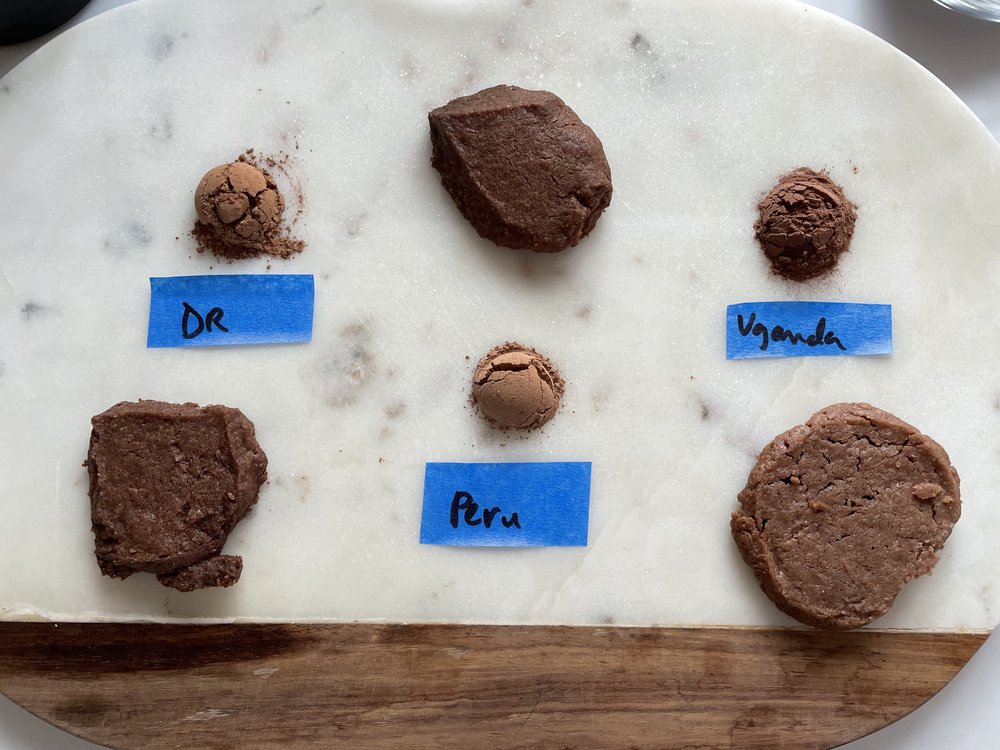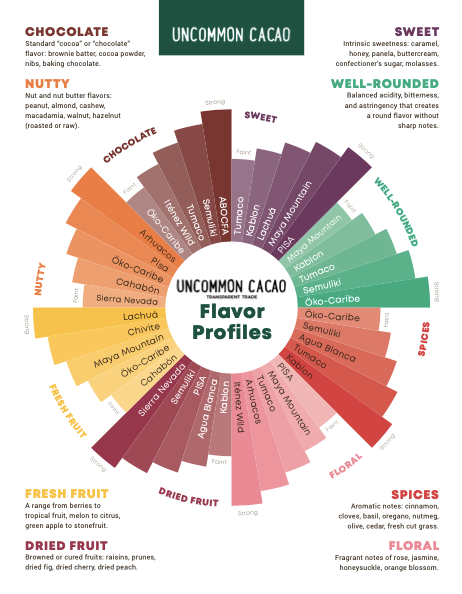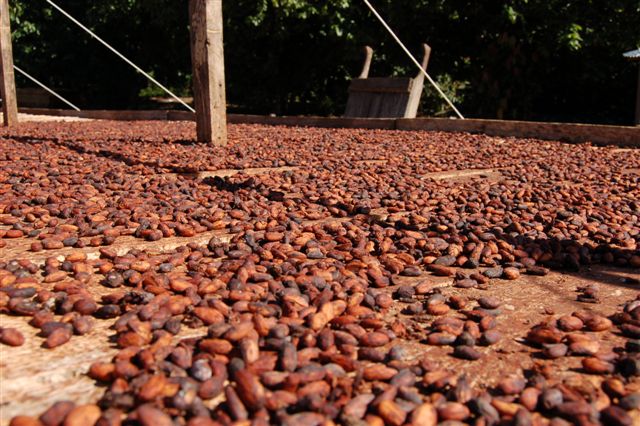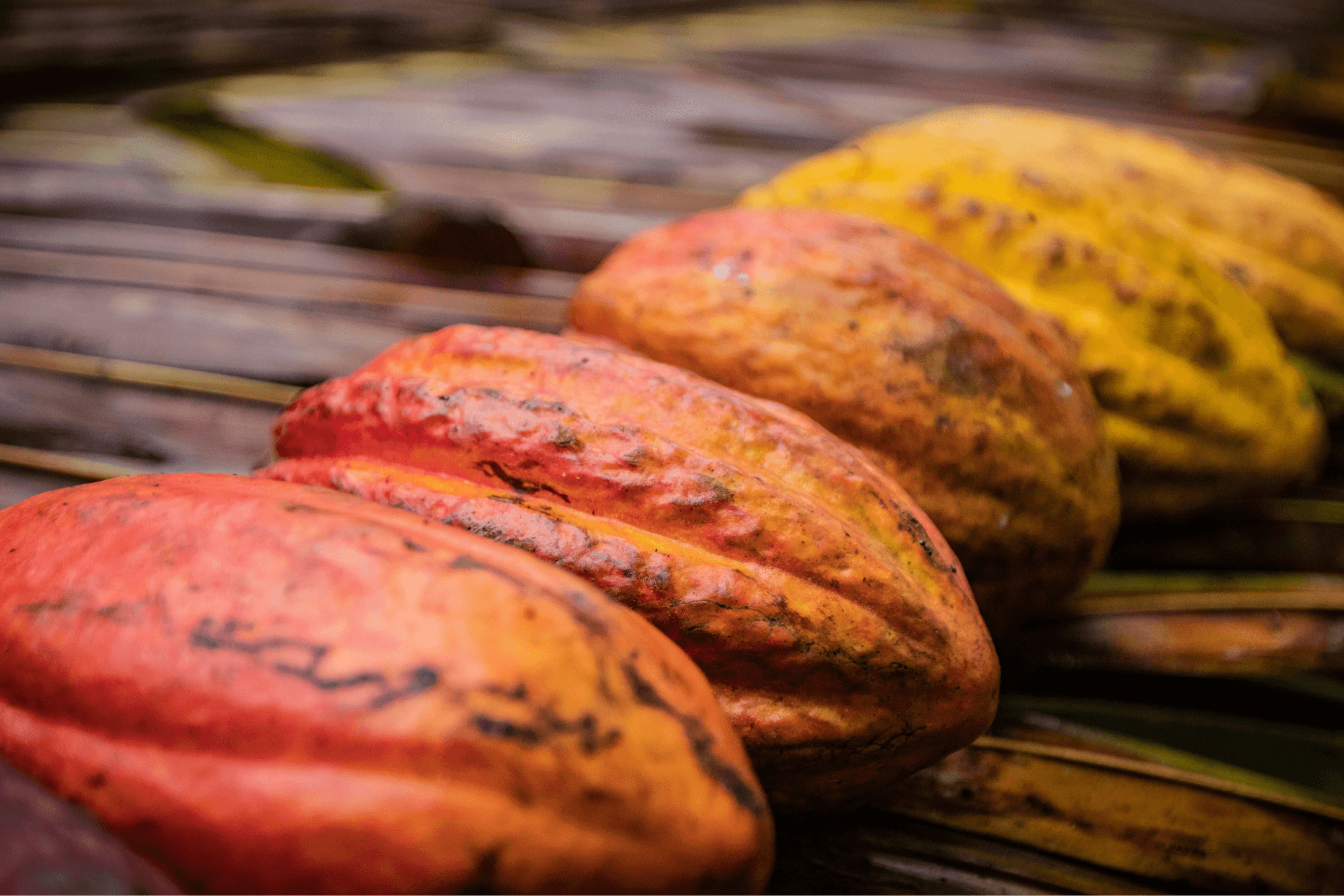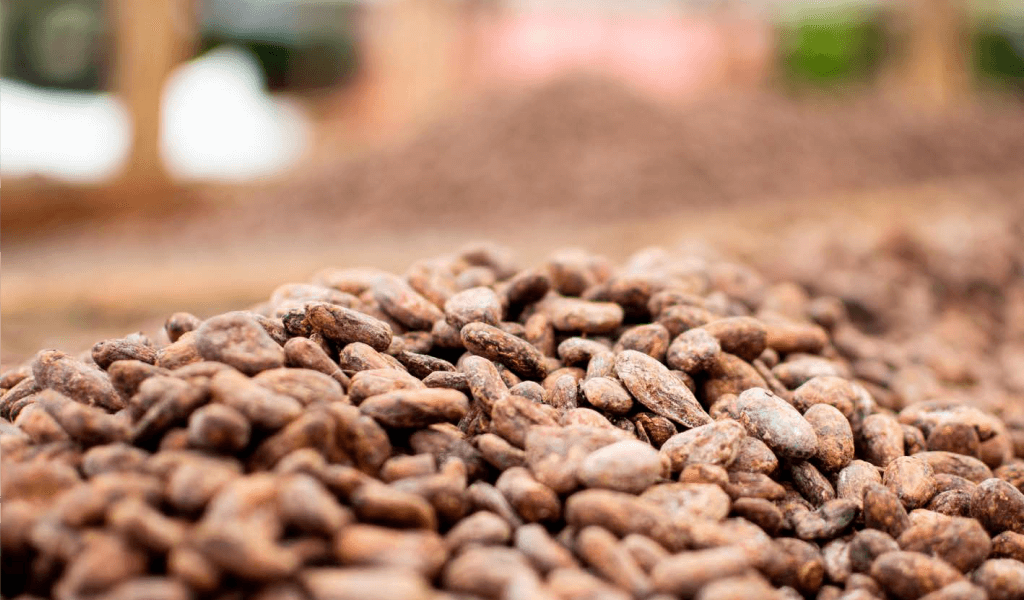Here are a few of the qualities or grades typically referenced for cocoa powder:
-
“Natural” powders are less processed, which means the cocoa is roasted and then pressed into cake and ground into powder. No alkalization process takes place. Natural powder is typically the lightest in color and maintains the unique flavor characteristics from the beans.
-
“Dutched” powders go through an alkalization process to remove acidity and achieve more neutral flavor characteristics. Dutched powders tend to be darker in color but there is still a wide range of shades.
-
The darkest shade of powder is known as Black cocoa powder. This type of powder is widely used in baked goods like Oreo-style cookies or blackout cakes. The powder is so heavily processed that it creates a homogenized and highly unnatural (yet, we’ll admit it, sometimes delicious) flavor.
-
Cocoa powder comes in various fat ranges. Two of the most common are 10-12% and 20-22%. A 20-22% powder will have twice as much cocoa butter remaining in the powder as a 10-12% powder. Selecting which to use is entirely depending on the baker or maker’s preferences.
Uncommon decided to work with exclusively natural powders, given our focus on highlighting unique qualities and flavors of specific beans. It was cool to learn, and then effectively test in our experiments, that natural and dutched cocoa powders can be easily substituted from a baking performance perspective. This allows the crafter or baker to find the perfect flavor profile match for their bake or brew!
In our tasting we used our Öko Caribe Dominican natural cocoa powder and Peru Cacaolife natural cocoa powder, both of which have a fat content of 10-12%, as well as a new product we are evaluating, Latitude Trade from Uganda, which was a high fat natural cocoa powder with 20-22% fat content.
Findings
Drinking, baking and ice cream making were the mediums we played around with for the flavor profiles. We were so excited to see how natural characteristics from each of the powders supported different products. In our findings, we found that the Öko Caribe powder had the deepest and richest flavor profile with creamy notes of maraschino cherry, caramel, and oak. We enjoyed it the most in drinking chocolate and spiced drinking chocolate applications.
For baking, the Peru Cacaolife cocoa powder was the most chocolatey and delicious. It had a lighter and sweeter chocolate profile than the Oko, which worked across a variety of cookie and cake styles. We noted there was a fresh grassy flavor that faded in baking, allowing notes of vanilla and honey to shine through.
Uganda was our top pick for the ice cream since it had the most even and consistent flavor. It didn’t taste particularly bright or deep, but it did have a soft, balanced, and mild flavor that worked well with all the cream and would be a good background note for more jazzy flavors like rocky road or s’mores inclusions. This also aligned with the research we found that identified high-fat cocoa powders as the ideal base for ice creams for a rich and high quality mouthfeel.
We had a lot of fun testing out and tasting single origin natural cocoa powders in many new contexts. This is only the tip of the iceberg when it comes to exploring how to pair natural single origin cocoa powders with even more versatile and accessible drink, ice cream, and baking recipes. The best part of bringing a single origin perspective to these new recipes with our powder offerings is that Transparent Trade data is available for these products too! The data behind Oko Caribe and Latitude Trade (Semuliki Forest) is already published in our Transparency Report, and Cacaolife has their own page with the transparency details for the derivative products. Cocoa butter and cocoa powder are typically mega-industrial, highly processed products with blended low-quality beans from multiple origins and no transparency – we’re hoping to bring some exciting new opportunities for bakers, makers, and cacao producers alike through introducing these transparerently-sourced, single origin cocoa products!
Some final “Good to know” notes
-
Storage tips: do not freeze cocoa powder since that can introduce moisture which can create a mold-friendly environment. Cocoa powder stores best in a cool, dry place to preserve flavor and shelf life. Storage temperatures below 86°F (30°C) are necessary to maintain overall quality.
-
No matter which natural cocoa powder you work with, it will have some natural acidity. Natural powders pair well with baking soda in baking in order to mellow the acidity.
-
For best results, cocoa powders should essentially always be paired with a fat, since the majority of the cocoa butter has been extracted in the creation of the powder.
